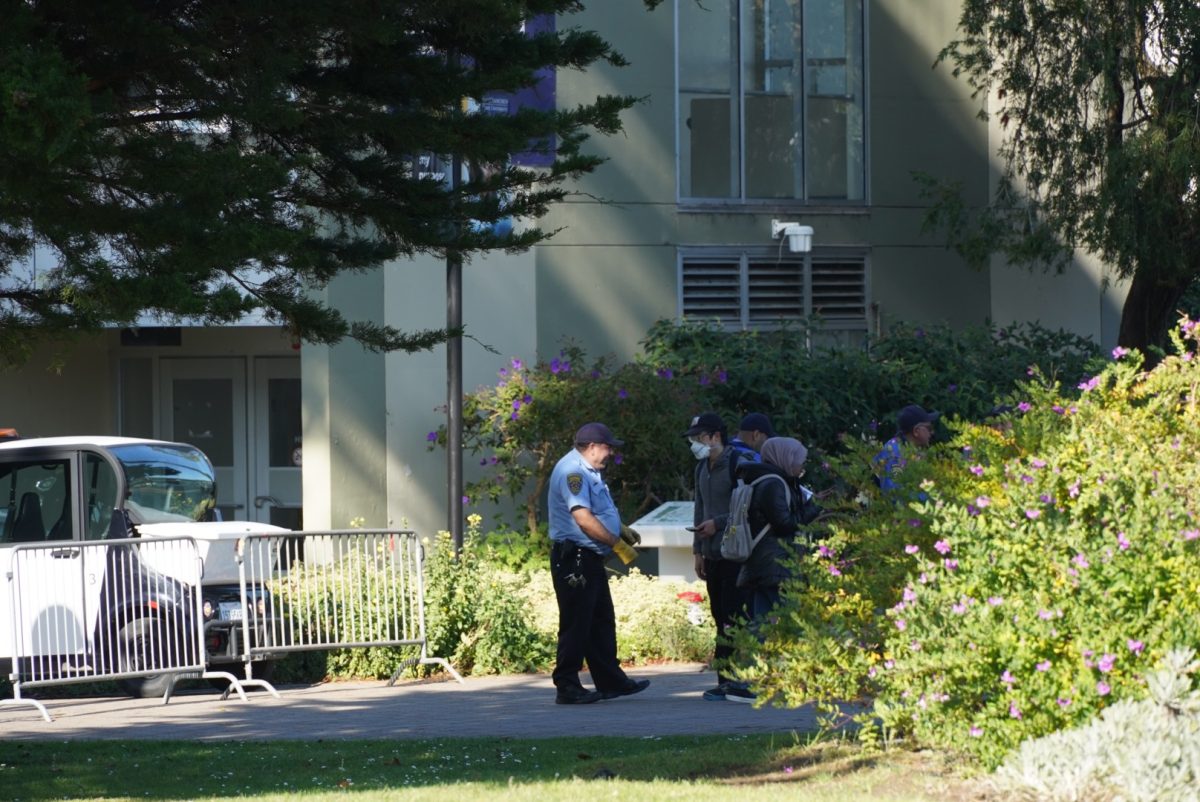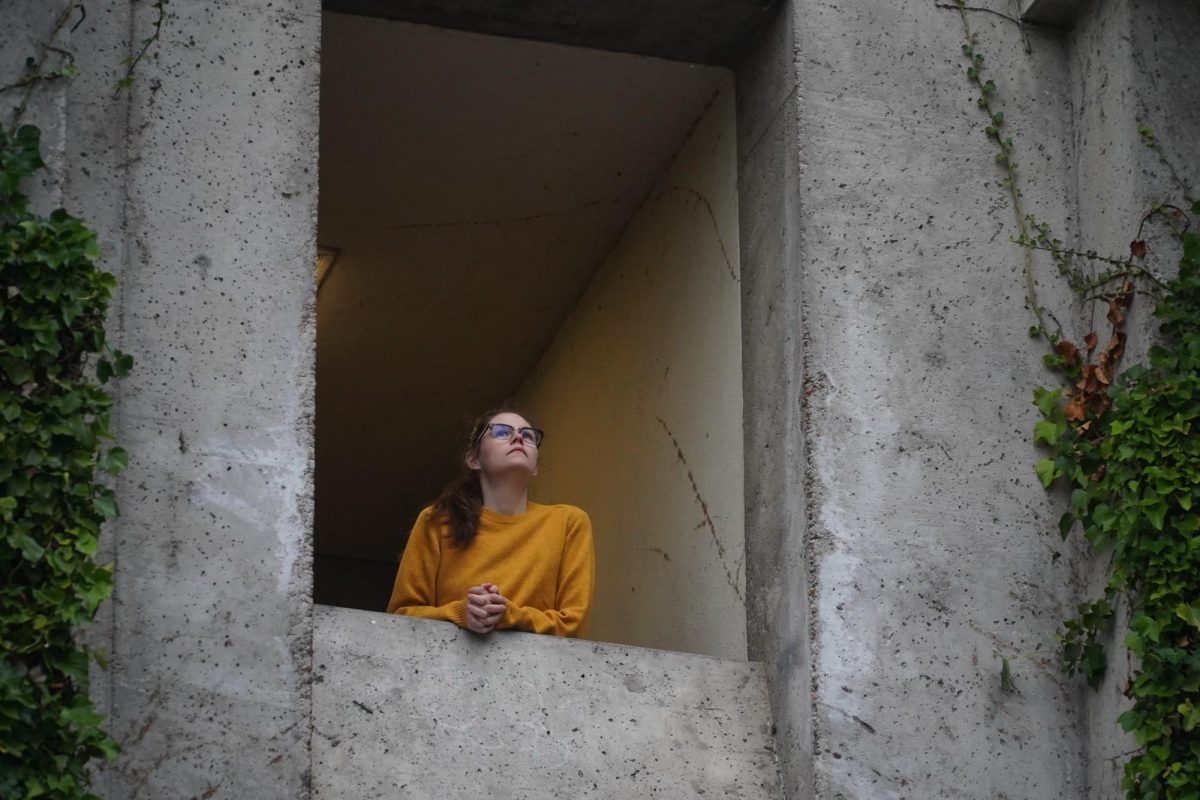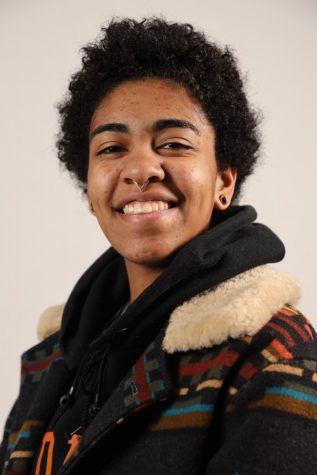“Puppet Show,” an experimental and abstract comedy created by SF State alumna Ai Ebashi and directed by Taylor Wuthrich, is a blend of different styles of Japanese theater with a hefty pinch of existentialism coming to life at the Shelton Theater. Only two performances remain on Oct. 20 and 23.
“It is a puppet play, but the metaphor of ‘Puppet Show’ is the driving idea of the play,” Wuthrich said. “To ask questions about free will [and] manipulation through this metaphor of a puppet show.”

Mimu Tsujimara applies makeup before her performance in PUPPET SHOW at the Shelton Theatre in San Francisco Calif. October 13, 2019 (photo by James Wyatt/ Golden Gate Xpress)
The Japanese-inspired play adds a twist on Bunraku, a traditional form of Japanese puppet theater that started in the early 17th century. In lieu of strings, three puppeteers operate a single puppet to move the left arm, legs, right arm and head. Puppeteers are in full view of the audience but traditionally dressed in all black to appear almost invisible to the crowd.
In the early stages of production, Ebashi and Wuthrich brought in Nick Ishimaru, a dramaturge in Japanese theater, to teach the cast and crew the traditional practices of Bunraku.
“The idea was to create a kind of traditional atmosphere and then break it,” Ebashi said. “It’s a comedy and it’s a parody, but in order to break it you have to know about what you’re talking about.”
Characteristics from Kabuki theater, a stylized Japanese drama, are integrated throughout the play while incorporating the kabuki curtain, an element that’s used to transition from one scene to another, exposing new elements. Ebashi and Wuthrich also added modern western aspects like metatheatre, a play that draws attention to the fact that it is fictional, and absurdism, where a character intentionally acts in outrageous behaviors. These styles would normally never be seen in Bunraku.
Ebashi’s story revolves around protagonist Sabu, who comes to realize that he is nothing more than a character in a play whose decisions are made by an unknown writer. The story transitions from two-dimensional to three-dimensional characters, all while breaking the fourth wall throughout the performance.
“I’ve never used puppets before so it was a different ballpark completely,” said Kyle Williams, who plays the main character, Sabu. “Being outside of your body and translating how you would move through the puppet … every emotion has to be amplified.”
Ebashi’s play started as a class project where she had to tell a story through a subject that wasn’t a human. Never thinking the story would ever be more than a stage reading, Wuthrich read the script and loved the concept.
Ebashi began creating new puppets out of wooden rods and air-dry clay. A grant from Theater Bay Area, a theater service organization, helped turn a bare-bones production into a full play. The grant allowed them to give their cast a stipend for their work and add more props to the performance.
“I thought it was incredible, when I did this as a fringe piece at San Francisco State,” said Jessica Ryning, an SF State alumna and former member of the original cast. “I was a part of it as one of the puppeteers so it’s really incredible to see it become a fully actualized performance. It’s so beautiful to see it grow so so much.”








